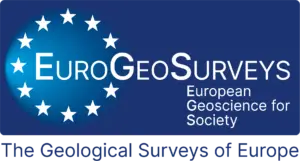GeoERA
GeoERA was a Horizon 2020 ERA-NET conducted by European geological survey organisations with 14 projects covering the geoscientific topics of Raw Materials, GeoEnergy and Groundwater, plus a specific project on Information Management (the GIP-project) to support the other projects.
The GIP project built on EGDI and extended the functionality substantially.
Read more about GeoERA at the programme’s website.
Programme facts:
Programme duration: 1 January 2017 – 28 February 2022 (whole GeoERA programme), 1 July 2018 – 31 October 2021 (individual projects).
Programme coordinator: Joop Hasselman, TNO
GIS viewer for all GeoERA results:
Through this viewer, the results of the GeoERA programme are accessible:
Open the map in a new tab
Other Scientific Themes
Basic Geology
Multiscale space-related datasets and data products are the fundamental components of geological baseline information delivered by national geological survey organisations. These datasets and products show and explain the geological architecture of the surface and subsurface of the Earth’s crust.
Mineral Resources
We live in a mineral-based world. It has been said that “if you can’t grow it, you have to mine it”. Indeed, virtually everything we use on a daily basis is manufactured from the Earth’s mineral resources. Mineral raw materials provide us with our basic needs – energy, infrastructure, transportation, technology and more.


